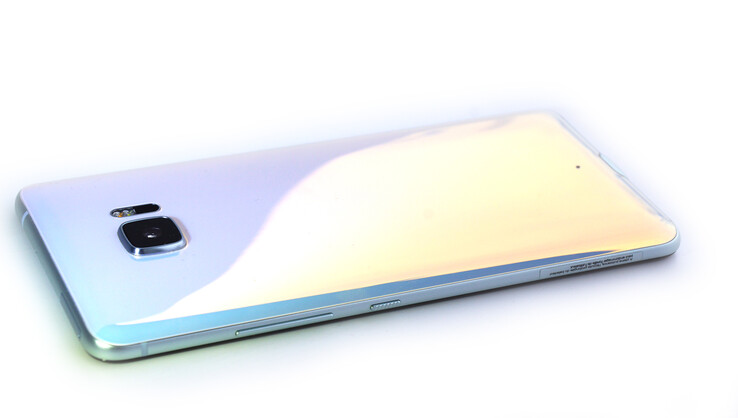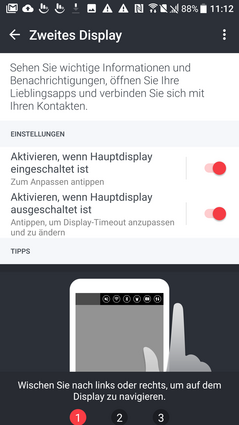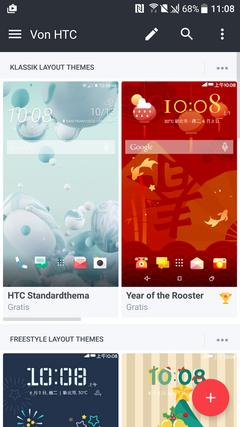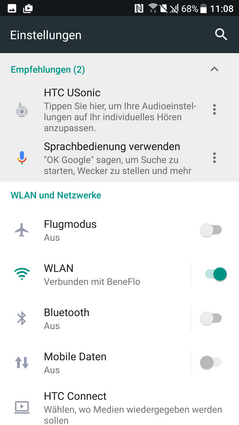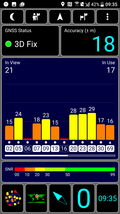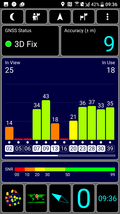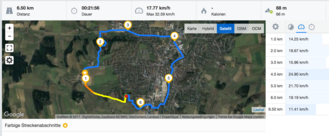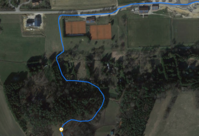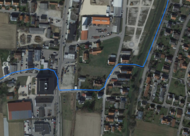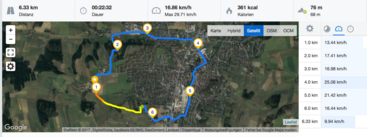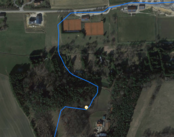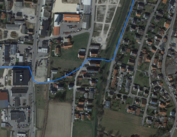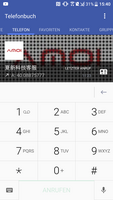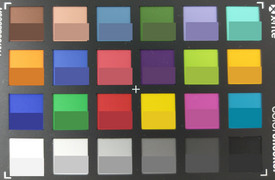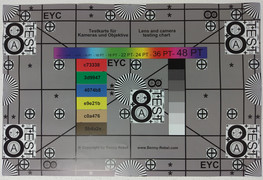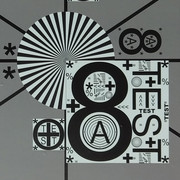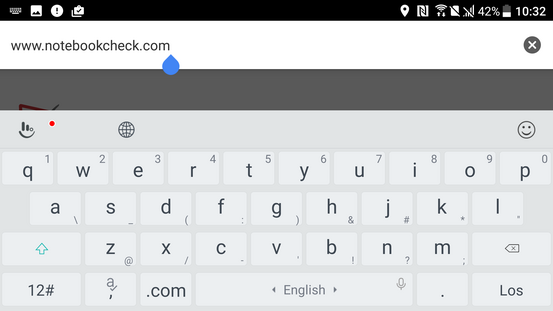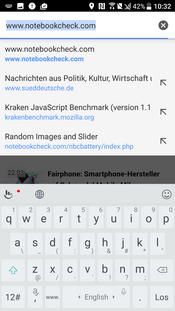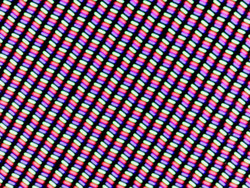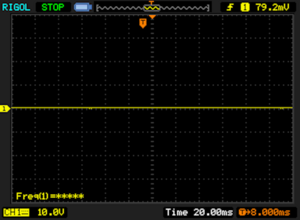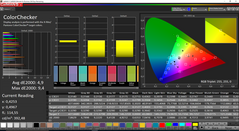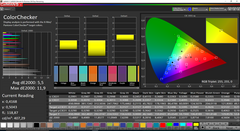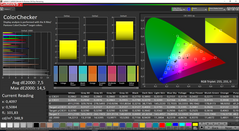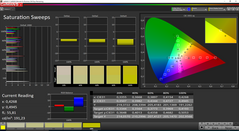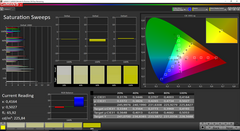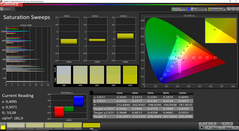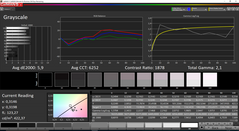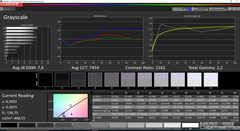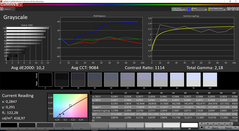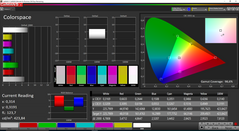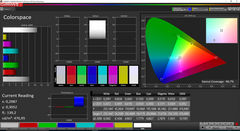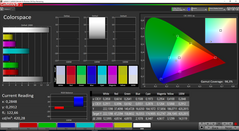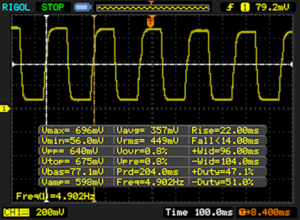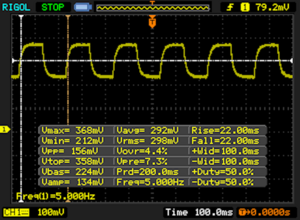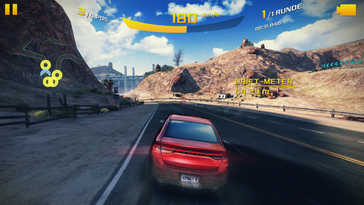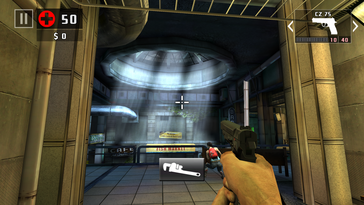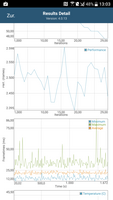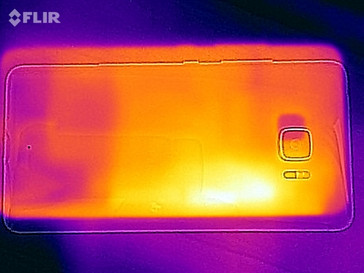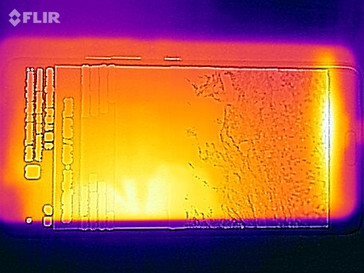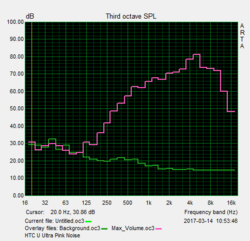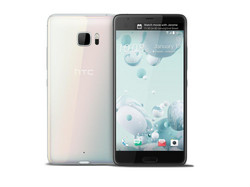HTC U Ultra Smartphone Review
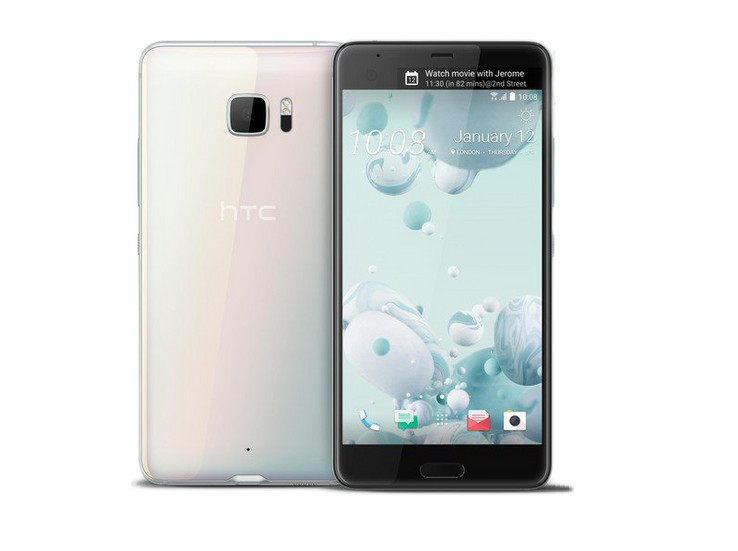
For the original German review, see here.
HTC wants to take off into the future. This involves personalizing the smartphone's handling even more and filling the Taiwanese manufacturer's vaults with enough money to break even again. Therefore, the devices have also been restarted: HTC will not offer affordable smartphones anymore. The company now focuses on high-quality devices with innovative features. The naming is also new: HTC's U lineup is to make clear who is in the center of attention, namely "U" so "you". The U Ultra is HTC's new flagship - and it is gigantic: At 5.7-inches, it has a lot of screen to offer - filled with high-resolution content. A high-quality speaker, four microphones for 3D audio recordings, and a personal assistant that learns from its user are also installed.
This, in fact, really sounds quite innovative. However, being a premium smartphone, HTC's U Ultra has strong rivals: The leaders Apple's iPhone 7 Plus and Samsung's Galaxy S7 Edge, as well as other opponents, such as Google's Pixel XL and LG's G6, belong to them. Let us look at how well HTC's U Ultra fares in our test course.
Case
HTC calls its new design language "liquid", and that fits: The rear really looks as if the surroundings are being reflected in a liquid. A stylish color effect like mother of pearl is used in our white model. The glass is curved around the edges. Other available colors are black, blue, and pink and each has its own color scheme on the back. HTC has promised a model with an extra scratch-resistant sapphire glass front for the near future.
The surface materials of the standard model should be particularly shatterproof thanks to a special treatment and thus prevent a "Bendgate" situation like with the iPhone 6 Plus. The first videos that put HTC's U Ultra through a torture test are already on the Internet, and we have linked one below. It proves that the surfaces of HTC's U Ultra are scratch-proof enough for everyday handling. Only the LED flash and the autofocus below it are a bit sensitive. The screen copes well with heat, and the pixels even recover completely after exposure to high heat.
HTC's U Ultra is twisted evidently in the video, but the glass back was scratched with a hardness pen prior to that. HTC's U Ultra proved to be quite stable in our test. Although it hardly warped, pressure from the front and back are passed to the screen and becomes visible in light waving. The rear can also be dented notably. This leads to an overall good stability impression with minor deductions.
HTC's U Ultra is a bit bigger than the XL or Plus models of other manufacturers. This is due to the generously sized 5.7-inch screen and the second screen situated above it. Although HTC's U Ultra is not bulky at a thickness of 8 millimeters, the rear-facing camera protrudes visibly out of the casing. The curved edges give it a pleasant feel. However, the metal frame has some sharp edges and the transition from the bezel to the back can also be felt.
In total, HTC's U Ultra looks very stylish and every color variant has its own appeal. The casing's stability is also good although the user will have to get used to the size and the manufacturing has minor flaws.
Connectivity
64 GB of storage and 4 GB of working memory are a good configuration. It is too bad that HTC currently does not offer other memory configurations for its smartphone or only as special editions. A dual-SIM model of HTC's U Ultra exists, but it is not presently available in Germany. The storage can be expanded via a micro-SD, which is a clear advantage over the iPhone 7 Plus. The USB C port supports USB 3.0, which is not yet the case in, for example, Samsung Galaxy S7 Edge. HTC's U Ultra also supports USB OTG. The absence of a 3.5-mm audio jack is deemed as a big problem by many. Although HTC includes a USB C headset, existing headsets or headphones with a lug jack can only be connected with an adapter. This is not in the smartphone's box and will have to be bought for 5 to 20 Euros (~$5 to ~$21) depending on the model.
Software
HTC's U Ultra already uses Android 7, as to be expected from a flagship smartphone from 2017. HTC has switched to leaving Android in its stock state as far as possible some time ago so that updates for the operating system can be provided as fast as possible. Also known from HTC: At the market launch of HTC's new flagship, some promised software features were not yet available: A personal assistant, HTC Sense Companion, that was to fulfill one of the main promises, namely automatic smartphone personalization, was not installed in our review sample. This was also the case with the video software Zoe. HTC briefly promises a download of Sense Companion in 2017, but it was installed during test time.
Sense Companion monitors all actions on the smartphone and calculates recommendations: For example, when driving a certain route by car regularly while using the smartphone for navigating, Sense Companion recommends the user to leave a bit earlier depending on the traffic situation. Or it reminds the user to recharge the smartphone when they have to go out again later. However, data has to first be collected and Sense Companion needs a few days before it really functions. The user can rate every action according to its usefulness, which should make Sense Companion more and more valuable for the user.
Otherwise, the Sense user interface that covers Android 7 offers a BlinkFeed in the right area, which accumulates news and updates from social media. A help app, an own mail app and, of course, HTC's Viveport app for virtual reality applications but which also requires a VR holder for the smartphone, are also present.
Communication and GPS
HTC's U Ultra supports many radio frequencies for communicating with mobile networks. Four GSM, five UMTS, and a total of 15 LTE bands are available here. Thus, there should not be any problems in foreign countries at least in the LTE network - very good news especially in view of the roaming charges in the EU. The maximum LTE speed is 600 MBit/s (download) and 50 MBit/s (upload), which corresponds to LTE Cat.11. Samsung's Galaxy S7 Edge manages up to 150 MBit/s and Google's Pixel XL only achieves a bit more in upload. However, no LTE network presently manages more than 375 MBit/s (download) in Germany (Vodafone) and, besides that, all rates are only theoretical and depend on many factors. The reception via the Vodafone LTE network was also good indoors in a major German city; we always had at least 4/5 of the signal.
HTC's U Ultra supports all up-to-date Wi-Fi standards including the very fast 802.11 ac. However, it only achieves much slower transmission rates than, for example, Google's Pixel XL in our standardized test a meter away from the router. We had the full signal and pages opened relatively fast next to the router in practice. Only half the signal was displayed 10 meters away from the router and through three walls. Pages opened a bit slower.
| Networking | |
| iperf3 transmit AX12 | |
| Google Pixel XL 2016 | |
| Samsung Galaxy S7 Edge | |
| HTC U Ultra | |
| LG G6 | |
| iperf3 receive AX12 | |
| Google Pixel XL 2016 | |
| LG G6 | |
| Samsung Galaxy S7 Edge | |
| HTC U Ultra | |
The GPS module could only find us near a window indoors, and then only at a relatively inaccurate 18 meters. At least an accuracy of nine meters was achieved outdoors. However, this is not really a good rate. Other, also much cheaper devices, achieve considerably better rates.
So what does it look like in real life? We took HTC's U Ultra on a bike ride alongside Garmin's Edge 500 professional navigation system. The measured difference between both GPS modules is 170 meters on a 6.5-kilometer route, which is acceptable. HTC's U Ultra logs a slightly shorter distance since it uses fewer measuring points than the professional navigation system. For example, we "flew" over a house or over the woods according to the map of HTC's U Ultra. Garmin's Edge 500 records a much more exact route here. Although no smartphone is as accurate as a professional navigation system, other models are considerably more exact than HTC's U Ultra. However, the given accuracy is still enough for free-time navigating.
Telephone and Call Quality
HTC has modified the phone app according to its Sense user interface. It ultimately offers similar features known from Google's stock app: Favorites can be selected, contacts can be directly accessed, and a keypad is available. These can be opened via tabs above the app's main screen.
The call quality is good at least at our end: The contact is very loud and we had to almost halve the sound before we reached a pleasant volume in a quiet surrounding. However, the sound is still noisy then and the contact sounds a bit muffled. We are not clearly intelligible at the contact's end and also sound a bit muffled. The contact states that a slight noise is also audible. Although the contact is also loud when using the hands-free mode, the sound is not quite as clear as we would desire. Our voices sound somewhat muffled and echo a bit too much at the contact's end. However, an advantage of the microphone is that it still records even very quiet speech reliably. Overall, the call quality is decent but Sony's premium models, such as the latest Xperia XZ, are far, far better.
Cameras
In terms of camera technology, HTC has always gone its own way for its flagship models. The manufacturer does not participate in the chase for even more megapixels but has relied on fewer but bigger pixels that capture more light and thus shoot better photos even in dark surroundings for some years. HTC's U Ultra has a rear-facing camera with "just" 12 megapixels. The technical specs read like all modern smartphones otherwise: optical image stabilizer, phase detection and laser autofocus, dual-LED flash. The camera module itself is the same as in HTC's 10 but with slight improvements, such as a reworked autofocus.
The camera's photos are very convincing: Many details are visible, the photos are extremely sharp, and a lot of light is captured. Some photos from the iPhone 6s look a bit less focused. HTC's U Ultra at least offers more details in dark areas. 4K videos can be recorded at 30 frames per second with the rear-facing camera. The quality is very good, and the exposure quickly adapts when the light situation in the room changes. A small highlight is that 3D audio can be recorded via the four speakers, so surround sound. It is too bad that the smartphone cannot play back this sound. We did not hear an unambiguous stereo sound, either.
The front camera is another highlight: With 16 megapixels, it has more pixels than the rear camera. However, an ultra-pixel mode with larger pixels to capture more light in darker areas can be set via the software. This actually also functions although we liked the outcomes in the 16-megapixel mode much better: The color reproduction and sharpness are on a visibly higher level here. In total, the results are, in fact, really good for a front camera.
We performed an additional test with the primary camera of HTC's U Ultra under defined light conditions in the lab. Here, it becomes apparent that the colors are reproduced a bit too brightly. We also noticed a light bluish tint in the photograph of our reference card. However, we liked the fact that the sharpness hardly decreases toward the edges and that text on a colored background is not a big challenge for the camera.
Accessories and Warranty
A quick charger, USB C cable, and a USB C headset with adaptive earpieces that we will look at in the "Speaker" chapter are in the box. HTC also includes a cleaning cloth and even a transparent plastic cover. A SIM tool for opening the slot is also present. A new charger or a car charger can be bought for 35 Euros (~$38) each. The JBL Reflect Aware C is another matching USB C headset but with noise suppression and is available for 120 Euros (~$130).
HTC includes a 24-month warranty on its smartphones. Please see our Guarantees, Return Policies and Warranties FAQ for country-specific information.
Input Devices and Handling
The virtual keyboard comes from TouchPal and has been modified slightly for HTC Sense compared with the standard version from Google's Play Store. It is possible to type well on the keyboard as it has big keys, functions reliably, and it offers many settings. The keyboard can be customized via themes, its size can be changed, and the keyboard can be divided when the user prefers typing with both hands.
The touchscreen functions reliably and responds to touch even at the edges. The second screen can be used just as reliably.
The fingerprint scanner is situated in the center below the screen and it responds very quickly to the finger. It also wakes up the smartphone from standby. The menu keys are below the screen, but the fingerprint scanner is used as the home button. The keys for displaying opened apps and back are relatively small and tapping beside them happens often.
The hardware keys on the casing's right are made of metal, easy to feel, and they have a very clear pressure point. They also respond reliably to inputs.
Display
The 5.7-inch primary screen in HTC's U Ultra has a resolution of 2560x1440 pixels. A small panel with a diameter of 2.05-inches and a generous resolution of 1040x160 pixels is situated beside the front camera. Quick-access apps, a music player, the weather or appointments are displayed on this second screen. It can be used independently from the primary screen.
Apple is traditionally not as interested in extremely high resolutions for its screens, and thus the iPhone 7 Plus only has a Full HD panel while all other comparison devices can compete with the resolution of HTC's U Ultra. Content looks very sharp on both the primary and secondary screen, text is very legible. The brightness of the SLCD screen of almost 445 cd/m² is decent, but the screens in Google's Pixel XL or the iPhone 7 Plus are much brighter. The illumination of 88% is still relatively homogeneous, but visible brightness differences could be seen at the edges.
| |||||||||||||||||||||||||
Brightness Distribution: 88 %
Center on Battery: 470 cd/m²
Contrast: 2136:1 (Black: 0.22 cd/m²)
ΔE ColorChecker Calman: 5.5 | ∀{0.5-29.43 Ø4.78}
ΔE Greyscale Calman: 7.6 | ∀{0.09-98 Ø5}
98.7% sRGB (Calman 2D)
Gamma: 2.2
CCT: 7454 K
| HTC U Ultra SLCD 5, 2560x1440, 5.7" | Apple iPhone 7 Plus IPS, 1920x1080, 5.5" | Google Pixel XL 2016 AMOLED, 2560x1440, 5.5" | Samsung Galaxy S7 Edge Super AMOLED, 2560x1440, 5.5" | LG G6 IPS LCD, 2880x1440, 5.7" | |
|---|---|---|---|---|---|
| Screen | 25% | 13% | 46% | 21% | |
| Brightness middle (cd/m²) | 470 | 557 19% | 402 -14% | 554 18% | 646 37% |
| Brightness (cd/m²) | 445 | 553 24% | 408 -8% | 552 24% | 611 37% |
| Brightness Distribution (%) | 88 | 97 10% | 85 -3% | 96 9% | 89 1% |
| Black Level * (cd/m²) | 0.22 | 0.35 -59% | 0.23 -5% | ||
| Contrast (:1) | 2136 | 1591 -26% | 2809 32% | ||
| Colorchecker dE 2000 * | 5.5 | 1.4 75% | 4 27% | 1.59 71% | 4.5 18% |
| Colorchecker dE 2000 max. * | 11.9 | 3.1 74% | 10.1 15% | 2.56 78% | 8.3 30% |
| Greyscale dE 2000 * | 7.6 | 1.3 83% | 3.2 58% | 2.01 74% | 6 21% |
| Gamma | 2.2 100% | 2.21 100% | 2.19 100% | 2.01 109% | 2.27 97% |
| CCT | 7454 87% | 6667 97% | 7037 92% | 6321 103% | 7996 81% |
| Color Space (Percent of AdobeRGB 1998) (%) | 63.1 | 82.12 | 67.74 | ||
| Color Space (Percent of sRGB) (%) | 99.83 | 99.98 | 99.05 |
* ... smaller is better
Screen Flickering / PWM (Pulse-Width Modulation)
| Screen flickering / PWM not detected | |||
In comparison: 53 % of all tested devices do not use PWM to dim the display. If PWM was detected, an average of 8098 (minimum: 5 - maximum: 343500) Hz was measured. | |||
The black level of 0.22 cd/m² is also very good, but two rivals have an advantage here: Thanks to their AMOLED panels, Google's Pixel XL and Samsung's Galaxy S7 Edge can display an absolute black. This leads to an infinitely high contrast and colors shine. HTC's U Ultra achieves a very good contrast ratio of 2136:1 even without that.
We also analyze the different color temperatures that the smartphone can offer with the spectrophotometer and CalMAN software. We tested a very warm white balance, the standard setting, and a very cool white balance. The warm setting is the most pleasant in our opinion since the bluish tint disappears and the color shifts are the lowest here. The color saturation is also the best here. However, a light reddish tint is produced in the maximum settings. Thus, the most natural colors are achieved when pushing the slider only one or two notches toward the warm white balance from the standard settings.
Display Response Times
| ↔ Response Time Black to White | ||
|---|---|---|
| 36 ms ... rise ↗ and fall ↘ combined | ↗ 22 ms rise | |
| ↘ 14 ms fall | ||
| The screen shows slow response rates in our tests and will be unsatisfactory for gamers. In comparison, all tested devices range from 0.1 (minimum) to 240 (maximum) ms. » 93 % of all devices are better. This means that the measured response time is worse than the average of all tested devices (20.2 ms). | ||
| ↔ Response Time 50% Grey to 80% Grey | ||
| 44 ms ... rise ↗ and fall ↘ combined | ↗ 22 ms rise | |
| ↘ 22 ms fall | ||
| The screen shows slow response rates in our tests and will be unsatisfactory for gamers. In comparison, all tested devices range from 0.165 (minimum) to 636 (maximum) ms. » 73 % of all devices are better. This means that the measured response time is worse than the average of all tested devices (31.6 ms). | ||
HTC's U Ultra is quite outdoor suitable thanks to its relatively bright screen. However, reflections on the screen in bright surroundings that could make it difficult to recognize content have to be accepted. We do not have complaints about the viewing angles: The image on the screen can be recognized from all directions.
Performance
HTC's U Ultra relies on Qualcomm's Snapdragon 821 MSM8996 Pro SoC. This is a model with four processing cores and is also installed in Google's Pixel XL and LG's G6. However, the SoC in the U Ultra only clocks at a maximum of 2.15 GHz like in Google's smartphone. The performance rates are thus also very similar to those of Google's Pixel XL. The processor speed of the iPhone 7 Plus is still unmatched. HTC's U Ultra calculates quickly in routine use, and it has enough computing power for all up-to-date apps.
Qualcomm's Adreno 530 graphics unit is installed. It is a very fast mobile graphics unit that successfully deals with even the most demanding games and apps. This is also seen in the benchmark scores even if they clearly lag behind those of Google's Pixel XL. The graphics card either has a lower clock speed or it throttles; we will examine this more closely in the "Temperature" chapter.
| AnTuTu v6 - Total Score (sort by value) | |
| HTC U Ultra | |
| Apple iPhone 7 Plus | |
| Google Pixel XL 2016 | |
| Samsung Galaxy S7 Edge | |
| LG G6 | |
| Geekbench 4.0 | |
| 64 Bit Single-Core Score (sort by value) | |
| HTC U Ultra | |
| Apple iPhone 7 Plus | |
| Google Pixel XL 2016 | |
| Samsung Galaxy S7 Edge | |
| 64 Bit Multi-Core Score (sort by value) | |
| HTC U Ultra | |
| Apple iPhone 7 Plus | |
| Google Pixel XL 2016 | |
| Samsung Galaxy S7 Edge | |
| GFXBench (DX / GLBenchmark) 2.7 | |
| T-Rex Onscreen (sort by value) | |
| HTC U Ultra | |
| Apple iPhone 7 Plus | |
| Google Pixel XL 2016 | |
| Samsung Galaxy S7 Edge | |
| LG G6 | |
| 1920x1080 T-Rex Offscreen (sort by value) | |
| HTC U Ultra | |
| Apple iPhone 7 Plus | |
| Google Pixel XL 2016 | |
| Samsung Galaxy S7 Edge | |
| LG G6 | |
| GFXBench 3.0 | |
| on screen Manhattan Onscreen OGL (sort by value) | |
| HTC U Ultra | |
| Apple iPhone 7 Plus | |
| Google Pixel XL 2016 | |
| Samsung Galaxy S7 Edge | |
| LG G6 | |
| 1920x1080 1080p Manhattan Offscreen (sort by value) | |
| HTC U Ultra | |
| Apple iPhone 7 Plus | |
| Google Pixel XL 2016 | |
| Samsung Galaxy S7 Edge | |
| LG G6 | |
| GFXBench 3.1 | |
| on screen Manhattan ES 3.1 Onscreen (sort by value) | |
| HTC U Ultra | |
| Apple iPhone 7 Plus | |
| Google Pixel XL 2016 | |
| Samsung Galaxy S7 Edge | |
| LG G6 | |
| 1920x1080 Manhattan ES 3.1 Offscreen (sort by value) | |
| HTC U Ultra | |
| Apple iPhone 7 Plus | |
| Google Pixel XL 2016 | |
| Samsung Galaxy S7 Edge | |
| LG G6 | |
| PCMark for Android - Work performance score (sort by value) | |
| HTC U Ultra | |
| Google Pixel XL 2016 | |
| Samsung Galaxy S7 Edge | |
| LG G6 | |
HTC's U Ultra is also a bit slower than comparable smartphones when browsing on the Internet according to the benchmarks. However, it is doubtful that this will be noticed in everyday use since the browsing speed of HTC's U Ultra is still very fast and it does not have problems loading intricate HMTL5 websites.
| Octane V2 - Total Score (sort by value) | |
| HTC U Ultra | |
| Apple iPhone 7 Plus | |
| Google Pixel XL 2016 | |
| Samsung Galaxy S7 Edge | |
| LG G6 | |
| Mozilla Kraken 1.1 - Total (sort by value) | |
| HTC U Ultra | |
| Apple iPhone 7 Plus | |
| Google Pixel XL 2016 | |
| Samsung Galaxy S7 Edge | |
| LG G6 | |
| JetStream 1.1 - Total Score (sort by value) | |
| HTC U Ultra | |
| Apple iPhone 7 Plus | |
| Google Pixel XL 2016 | |
| Samsung Galaxy S7 Edge | |
| LG G6 | |
* ... smaller is better
HTC's U Ultra does not show weakness in storage access, and it is even the fastest smartphone in sequential write. It keeps up well otherwise. It also defeats Samsung's Galaxy S7 Edge in micro-SD card access. We tested this with our Toshiba Exceria Pro M401 reference card.
| AndroBench 3-5 | |
| Sequential Read 256KB (sort by value) | |
| HTC U Ultra | |
| Google Pixel XL 2016 | |
| Samsung Galaxy S7 Edge | |
| LG G6 | |
| Sequential Write 256KB (sort by value) | |
| HTC U Ultra | |
| Google Pixel XL 2016 | |
| Samsung Galaxy S7 Edge | |
| LG G6 | |
| Random Read 4KB (sort by value) | |
| HTC U Ultra | |
| Google Pixel XL 2016 | |
| Samsung Galaxy S7 Edge | |
| LG G6 | |
| Random Write 4KB (sort by value) | |
| HTC U Ultra | |
| Google Pixel XL 2016 | |
| Samsung Galaxy S7 Edge | |
| LG G6 | |
| Sequential Read 256KB SDCard (sort by value) | |
| HTC U Ultra | |
| Samsung Galaxy S7 Edge | |
| LG G6 | |
| Sequential Write 256KB SDCard (sort by value) | |
| HTC U Ultra | |
| Samsung Galaxy S7 Edge | |
| LG G6 | |
Games
We normally test two up-to-date games per benchmark to determine the gaming suitability of a smartphone. Unfortunately, this was not possible on HTC's U Ultra because the GameBench app could not record any frame rates. Based on the error messages, we presume that HTC has incorporated a safety mechanism into the system that prevents testing. However, we can say that games on HTC's U Ultra will definitely be fun and that the smartphone is likely equipped for all new games that will appear over the next few years. Demanding games, such as Asphalt 8 or Dead Trigger 2, run as smooth as silk even in the screen's maximum resolution. More simple games like Angry Birds are just as fun on HTC's U Ultra and run just as smoothly.
Using the touchscreen and position sensor for control is pleasing and also very accurate.
Emissions
Temperature
Although the casing heats up palpably during load, the temperatures never get unpleasant. We measured a maximum of 37.2 °C on the back in the center area where the SoC is likely situated. This is also the highest temperature that we measured. In idle, we measured a maximum of 34.5 °C on the front in the area of the camera. The temperature increase is very local in each case and lower in other areas of the smartphone.
Does the graphics card or the CPU throttle? We find out by running the battery test of GFXBench. The same sequence is rendered 30 times and the results are logged. A very unstable frame rate results, but the fluctuations of 10% are not really significant and the ultimate outcomes are not consistently lower than at the beginning. Thus, we can say that although the performance varies, throttling during load is unlikely in total.
(+) The maximum temperature on the upper side is 36.9 °C / 98 F, compared to the average of 35.2 °C / 95 F, ranging from 21.9 to 247 °C for the class Smartphone.
(+) The bottom heats up to a maximum of 37.2 °C / 99 F, compared to the average of 34 °C / 93 F
(+) In idle usage, the average temperature for the upper side is 30.5 °C / 87 F, compared to the device average of 32.9 °C / 91 F.
Speakers
HTC has paid special attention to the installed speakers since its beginnings. HTC again installs two speakers into the U Ultra - one behind the earpiece and the other on the lower edge - to make stereo sound possible. The Boom Sound software that tweaks the sound is, of course, also present. However, the user can only switch between music and theater modes for videos. HTC's U Ultra is certified for Hi-Res Audio playback.
This all sounds very good but we discovered that the speakers in HTC's U Ultra are disappointing even if they are still of a high standard. High tones sound unpleasantly loud, we miss the bass pressure of former models, and we would have wished for a more balanced sound in general. This subjective impression also roughly correlates to the results of the test with the ARTA software.
HTC wants to score with a special headset this time: HTC U Sonic, an in-ear headset that has a very special feature. It analyzes the user's inner ear via a sonic pulse and adapts the sound accordingly. This functions quickly and easily, and the improvement is really audible. It is great that HTC includes this high-tech gadget for free.
However, a big problem for many users will be that the analog 3.5-mm audio jack is no longer contemporary for using such high-tech headsets and has been omitted. Besides that, it reserves too much room inside the casing that could be used better for other things according to HTC.
3D surround sound can be recorded since HTC installs a total of four microphones. However, these recordings only function when shooting a video. An audio-only recording is currently not possible.
HTC U Ultra audio analysis
(+) | speakers can play relatively loud (86 dB)
Bass 100 - 315 Hz
(-) | nearly no bass - on average 27.3% lower than median
(±) | linearity of bass is average (10.1% delta to prev. frequency)
Mids 400 - 2000 Hz
(+) | balanced mids - only 4.4% away from median
(+) | mids are linear (6.6% delta to prev. frequency)
Highs 2 - 16 kHz
(±) | higher highs - on average 12.1% higher than median
(+) | highs are linear (6.3% delta to prev. frequency)
Overall 100 - 16.000 Hz
(±) | linearity of overall sound is average (29% difference to median)
Compared to same class
» 76% of all tested devices in this class were better, 3% similar, 21% worse
» The best had a delta of 11%, average was 35%, worst was 134%
Compared to all devices tested
» 87% of all tested devices were better, 2% similar, 11% worse
» The best had a delta of 4%, average was 24%, worst was 134%
Apple iPhone 7 Plus audio analysis
(±) | speaker loudness is average but good (81.4 dB)
Bass 100 - 315 Hz
(-) | nearly no bass - on average 24.1% lower than median
(±) | linearity of bass is average (7.4% delta to prev. frequency)
Mids 400 - 2000 Hz
(+) | balanced mids - only 4.7% away from median
(±) | linearity of mids is average (7.6% delta to prev. frequency)
Highs 2 - 16 kHz
(+) | balanced highs - only 4.3% away from median
(+) | highs are linear (6.9% delta to prev. frequency)
Overall 100 - 16.000 Hz
(±) | linearity of overall sound is average (22% difference to median)
Compared to same class
» 45% of all tested devices in this class were better, 7% similar, 48% worse
» The best had a delta of 11%, average was 35%, worst was 134%
Compared to all devices tested
» 63% of all tested devices were better, 6% similar, 31% worse
» The best had a delta of 4%, average was 24%, worst was 134%
Frequency diagram in comparison (checkboxes above can be turned on/off!)
Energy Management
Power Consumption
HTC's U Ultra is not really economic with energy. This might be due to the big and high-resolution screen and the second screen. The smartphone consumes more energy in a turned-off state and in standby than the comparison devices. When the smartphone is being used, it consumes at least 1 watt. HTC's U Ultra is more energy-guzzling than other smartphones in this category in all sectors: It requires up to 8.9 watts during load.
| Off / Standby | |
| Idle | |
| Load |
|
Key:
min: | |
| HTC U Ultra 3000 mAh | Apple iPhone 7 Plus 2915 mAh | Google Pixel XL 2016 3450 mAh | Samsung Galaxy S7 Edge 3600 mAh | |
|---|---|---|---|---|
| Power Consumption | 16% | 41% | 33% | |
| Idle Minimum * (Watt) | 1 | 0.77 23% | 0.53 47% | 0.63 37% |
| Idle Average * (Watt) | 2.41 | 2.04 15% | 1.07 56% | 1.1 54% |
| Idle Maximum * (Watt) | 2.46 | 2.24 9% | 1.12 54% | 1.56 37% |
| Load Average * (Watt) | 6.8 | 4.69 31% | 5.53 19% | 5.95 12% |
| Load Maximum * (Watt) | 8.9 | 8.66 3% | 6.26 30% | 6.7 25% |
* ... smaller is better
Battery Runtime
The battery has an only average capacity with 3000 milliampere hours or 11.4 watt hours. The Galaxy S7 Edge, for example, offers a 20% higher battery capacity. Like in most high-end smartphones, the battery in HTC's U Ultra is non-removable. The U Ultra at least manages just over nine hours of runtime in the Wi-Fi test, which is a bit longer than the Google Pixel XL does. Thus, a workday is not a problem in practice. It is also possible to work away from the outlet even for two days when the load is light. An energy-saving mode and an extreme energy-saving mode help extend the battery life when necessary.
Charging is fast thanks to Quick Charge. Not quite two hours was needed to fully recharge the handset.
| HTC U Ultra 3000 mAh | Apple iPhone 7 Plus 2915 mAh | Google Pixel XL 2016 3450 mAh | Samsung Galaxy S7 Edge 3600 mAh | LG G6 3300 mAh | |
|---|---|---|---|---|---|
| Battery runtime | 17% | -9% | 43% | 22% | |
| Reader / Idle (h) | 26.1 | 30.6 17% | 22.2 -15% | 27.7 6% | 29.8 14% |
| H.264 (h) | 10.1 | 13.6 35% | 8.4 -17% | 15.2 50% | 13 29% |
| WiFi v1.3 (h) | 9.1 | 9.8 8% | 8.4 -8% | 12.2 34% | 11.5 26% |
| Load (h) | 3.6 | 3.8 6% | 3.8 6% | 6.5 81% | 4.2 17% |
Pros
Cons
Verdict
In terms of design, HTC delivers a superb device with its U Ultra: The shimmering rear is definitely an eye-catcher. The handset can also score in many other aspects: The included high-end headset is pleasing, the lush memory configuration is a bonus point, and the cameras do a very good job. The software is appealing and HTC has really put effort into making its smartphone something special.
The only mediocre battery life, the lapse with the Wi-Fi speed, and the inaccurate GPS, as well as some missing features, such as wireless charging or protection against water and dust that the current premium models of other manufacturers come with at the moment, are things that put HTC's U Ultra in a bad light. The second screen is a double-edged sword: On the one hand, it needs additional power and is not always the most practical solution. On the other, a music player on a small second screen is definitely nice to have. Thus, the user will have to decide if it is useful or not.
HTC's U Ultra is a giant: With a 5.7-inch panel plus secondary screen, it has quite a bit of screen surface area. An innovative headset and a personal assistant are also part of the bundle. It is too bad that HTC messes up in its key skill: The speakers are only mediocre.
Seen in total, HTC's U Ultra is, in fact, a worthy premium-range smartphone thanks to its good performance rates, low temperatures, high-quality accessories, and some innovations. However, it cannot quite compete with the top models by Apple and Samsung. It lacks the last bit of perfection in some places for that.
HTC U Ultra
- 03/23/2017 v6 (old)
Florian Wimmer




